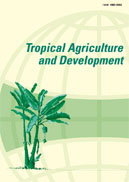Volume 63, Issue 1
Displaying 1-7 of 7 articles from this issue
- |<
- <
- 1
- >
- >|
Original Article
-
2019Volume 63Issue 1 Pages 1-11
Published: 2019
Released on J-STAGE: August 20, 2019
Download PDF (530K) -
2019Volume 63Issue 1 Pages 12-17
Published: 2019
Released on J-STAGE: August 20, 2019
Download PDF (448K) -
2019Volume 63Issue 1 Pages 18-26
Published: 2019
Released on J-STAGE: August 20, 2019
Download PDF (508K)
Short Report
-
2019Volume 63Issue 1 Pages 27-29
Published: 2019
Released on J-STAGE: August 20, 2019
Download PDF (366K) -
2019Volume 63Issue 1 Pages 30-33
Published: 2019
Released on J-STAGE: August 20, 2019
Download PDF (1374K) -
2019Volume 63Issue 1 Pages 34-37
Published: 2019
Released on J-STAGE: August 20, 2019
Download PDF (1812K)
Information
-
2019Volume 63Issue 1 Pages 38-46
Published: 2019
Released on J-STAGE: August 20, 2019
Download PDF (1399K)
- |<
- <
- 1
- >
- >|
